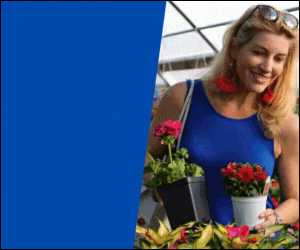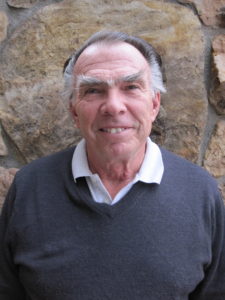
At 73 years old, Alameda Wholesale Nursery is one of the oldest wholesale nurseries in Colorado. The company offers more than a thousand varieties of plant material and planting supplies to landscape contractors. Stan Brown, CCNP, has been leading Alameda since 1964, and is currently president, marketing manager and B&B tree buyer. He received the CNGA Hall of Fame Award in 2002, and is well known for his expertise in arboriculture.
When asked for advice on caring for mature trees that garden center staff could share with customers, Brown pointed to the early life of a tree as being when most mistakes are made that impact its health.
“The roughest time to take care of a tree is the first two to three years, especially in an area not adjacent to grass. Grass is a wonderful thing because it shouts out these red flags when it’s not getting enough water. Grass shows the stress way before the tree is hurting. When a tree is out in the middle of a mulched area, not near grass, people have to be a lot more conscious of giving it water every week or a couple times a week,” he said.
After five years when the tree is established, “You have to work hard to kill it, not withstanding anything like EAB (Emeral Ash Borer),” he added.
When planting a tree, he recommends a two to four-foot wide mulch ring around it to help keep lawn mowers and string trimmers away from the trunk. When planted in a lawn, the top of the soil and mulch needs to be an inch or two above grade so water can drain a little, since lawns take more water than trees need.
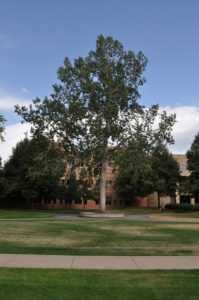
“It’s worth saying that people should make sure that any stakes and guy wires should be removed after installation,” he said. “It’s a good idea to prod around the tree base to make sure no twine is there to girdle the tree.”
Though mature trees are adept at capturing moisture when nearby landscaping is being irrigated, they need water when the sprinkler systems are turned off. He points to lack of moisture during the winter as the main stressor of both young and mature trees.
“Colorado gets what’s called champagne powder snow—it’s just light and fluffy and can blow away. There’s not much moisture in it at all, so giving trees a drink in December and January is especially critical,” he said. “For Colorado blue spruce, Austrian pines and other evergreens, that are using

more water in the winter than deciduous trees, because the needles are equivalent to leaves, winter watering is essential. Those needles are still doing photosynthesis and making energy, and doing that consumes moisture.”
Stress from too little moisture will show up on the south side of a tree first, and then it becomes a cumulative effect. One year of dryness can kill the root hairs, so the tree has to spend some energy on rebuilding roots. Two or more years of being overly dry will cause permanent damage to the tree.
“A drink once a month if we have not received that by mother nature can be the difference between a tree dying and thriving,” he cautioned.
The biggest problem he sees is people not paying attention to the future growth of the tree and the expected width and height. Alameda provides information on signs and on every tag about how wide and tall every tree will get. Those dimensions should guide the customer in where to plant the tree to give it enough room to grow.
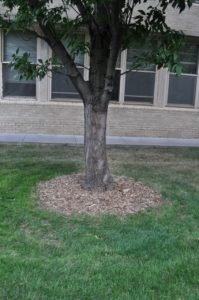
“People still put trees under powerlines, too close to each other or too close to buildings. It’s really detrimental in the long run when they are just trying for the immediate effect of the planting. I looked at one job where a client put three trees in a line five feet wide and 15 feet long. He said, ‘We are just trying to sell the house.’ In the long run, that’s going to leave someone with a bill to thin out or remove the tree altogether,” Brown explained.
Planting trees under powerlines is one of Brown’s biggest pet peeves. Power utilities are obligated to providing power safely so the tree branches will inevitably be chopped away, negatively impacting the tree’s aesthetics as well as health.
For overall tree care, it’s a good idea for customers to know the variety of trees they have. They can “Google” the varieties and see what arboretums or universities say are possible issues with each variety, so customers can be on the lookout for those symptoms.
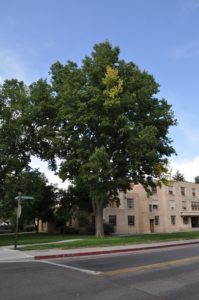
“If one of your trees is an ash, you can decide if it important enough in your landscape to have a commercial arborist spray it for EAB,” he said. (In Colorado, the pest was first found in Boulder County, and has more recently been found in Broomfield and Westminster. See the article on page 18 for details.)
For less threatening pests such as aphids, spider mites or Japanese beetles, individual trees can be treated and brought back to health. “Years ago it was more common to spray every tree in your yard every month as a preventative measure. That has been proven to not be environmentally friendly,” he explained.
If a customer notices tree leaves becoming yellow. They are likely chlorotic, suffering from chlorosis, a condition in which leaves produce insufficient chlorophyll.
“Colorado has many soil types—everything from sandy loam to bentonite clay, and the soil can be the cause of the chlorosis. On a smaller tree you can try to treat it with chelated iron (a form of iron absorbed more easily by trees). Larger trees should be treated by a commercial arborist,” he said.
He also recommends professionals, who are skilled in addressing tree health, for trimming mature trees. “A commercial arborist is worth hiring for mature trees that, beyond spring trimming, are probably beyond the scope of care of the average homeowner,” he explained.
As far as when it’s time to remove a mature tree, he concluded, “It’s mostly an aesthetic issue. Trees don’t have an expiration date, or stamp stating they are no good after 20 years. With proper care and treatment of problems, they’ll keep going long after we’re here.”





